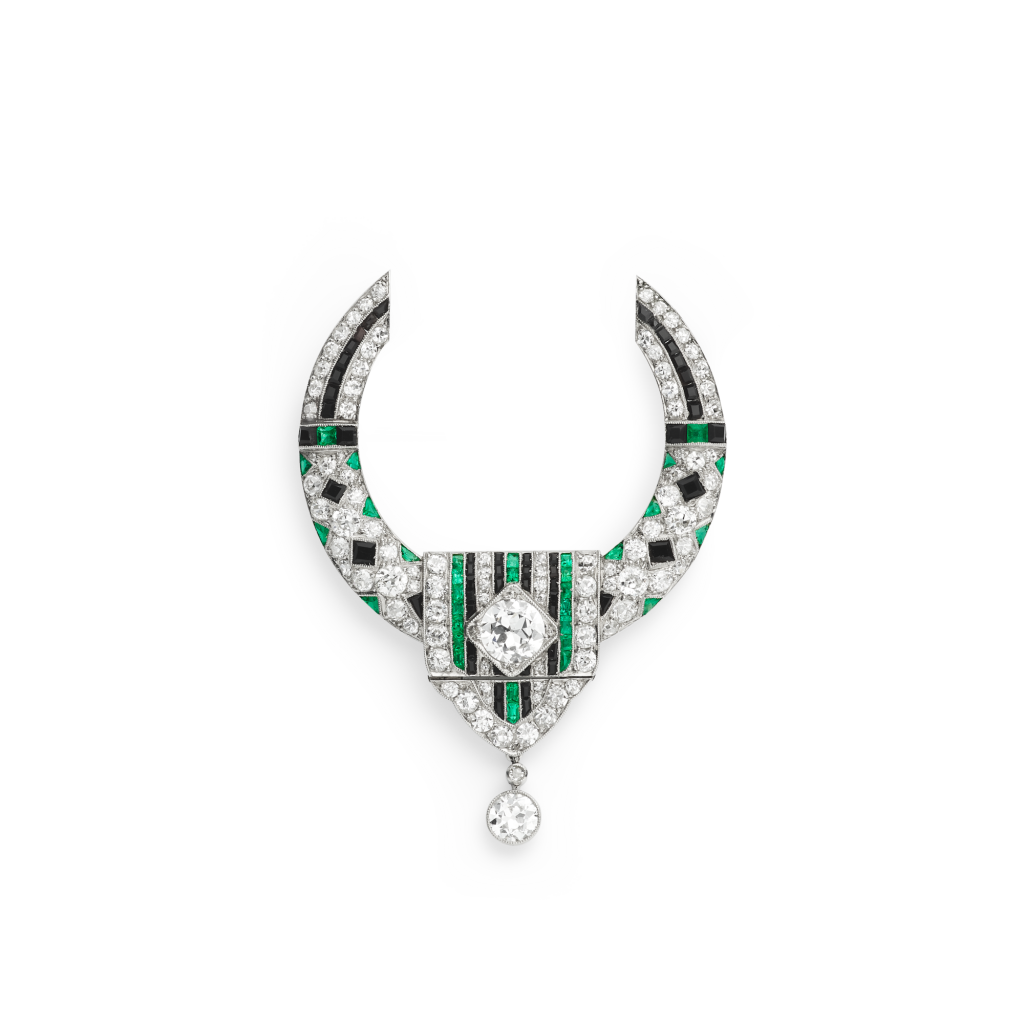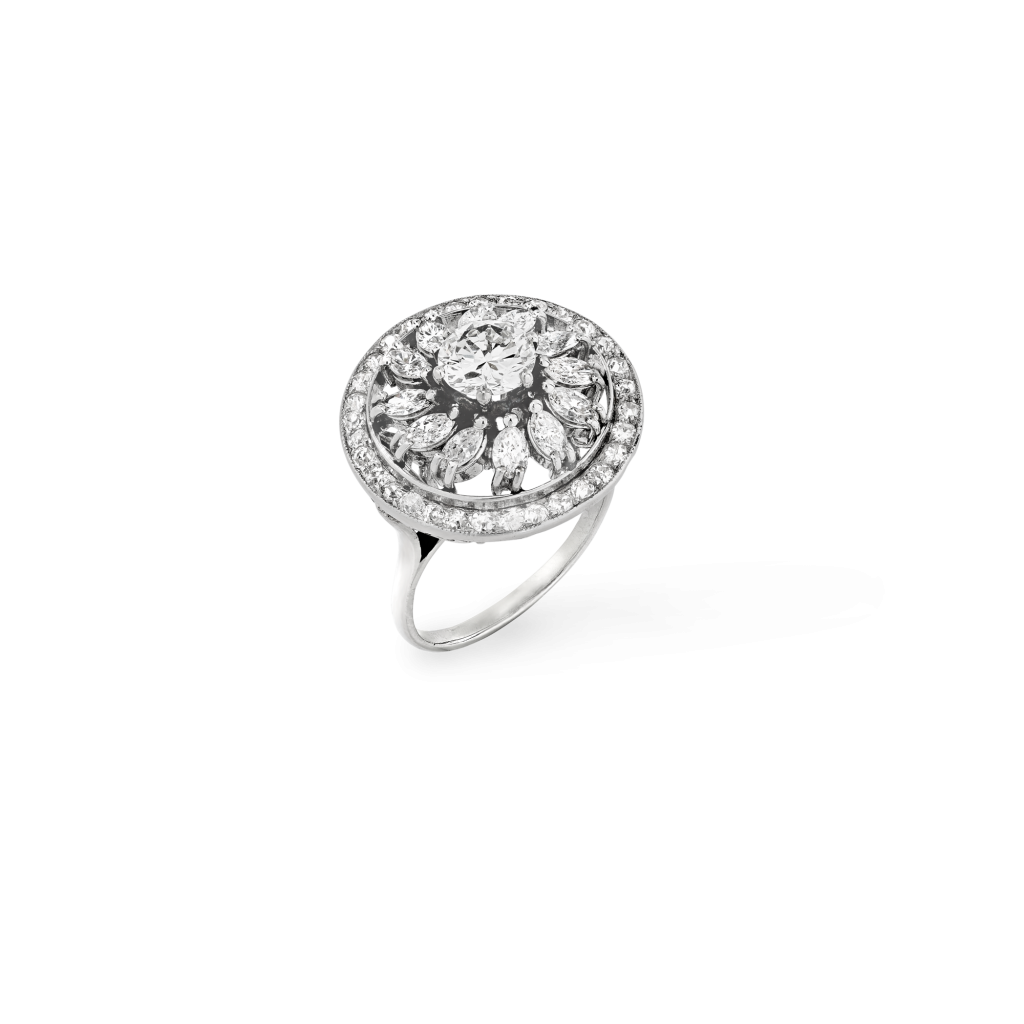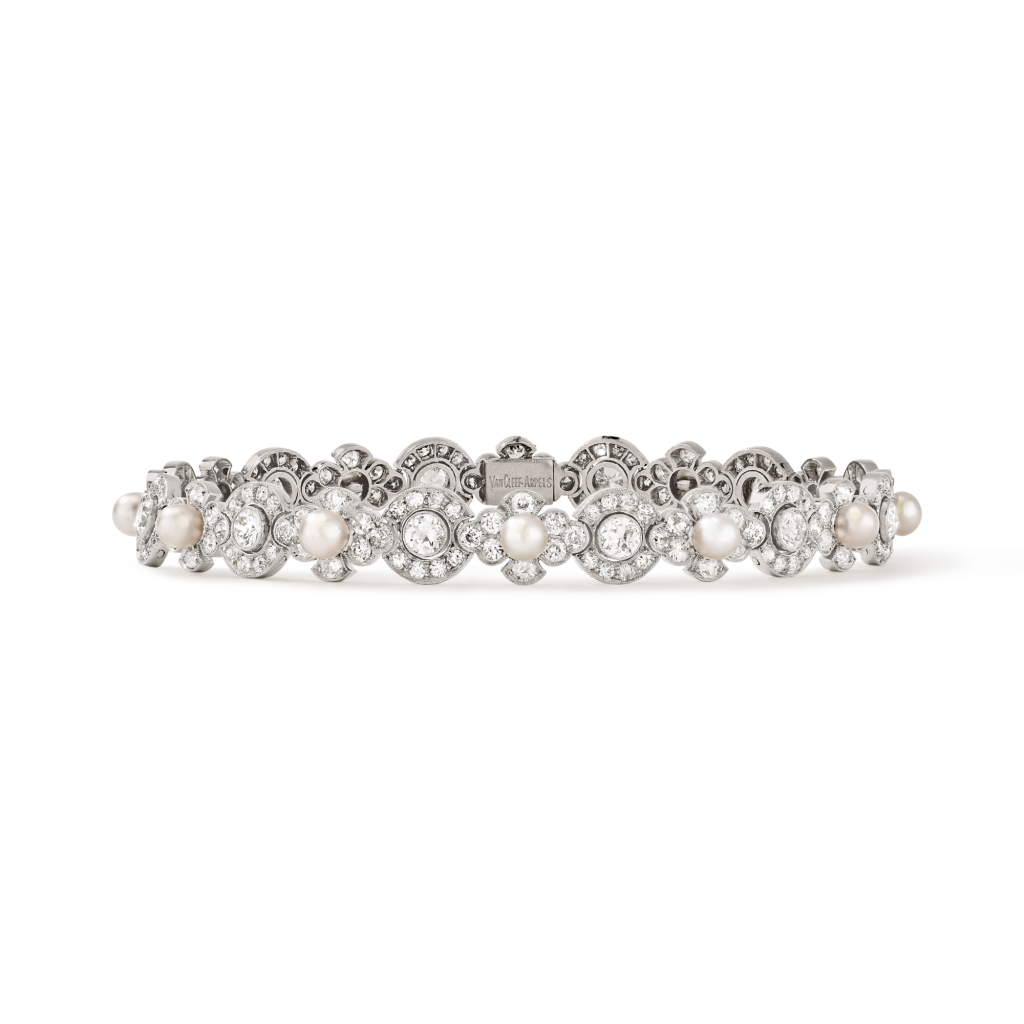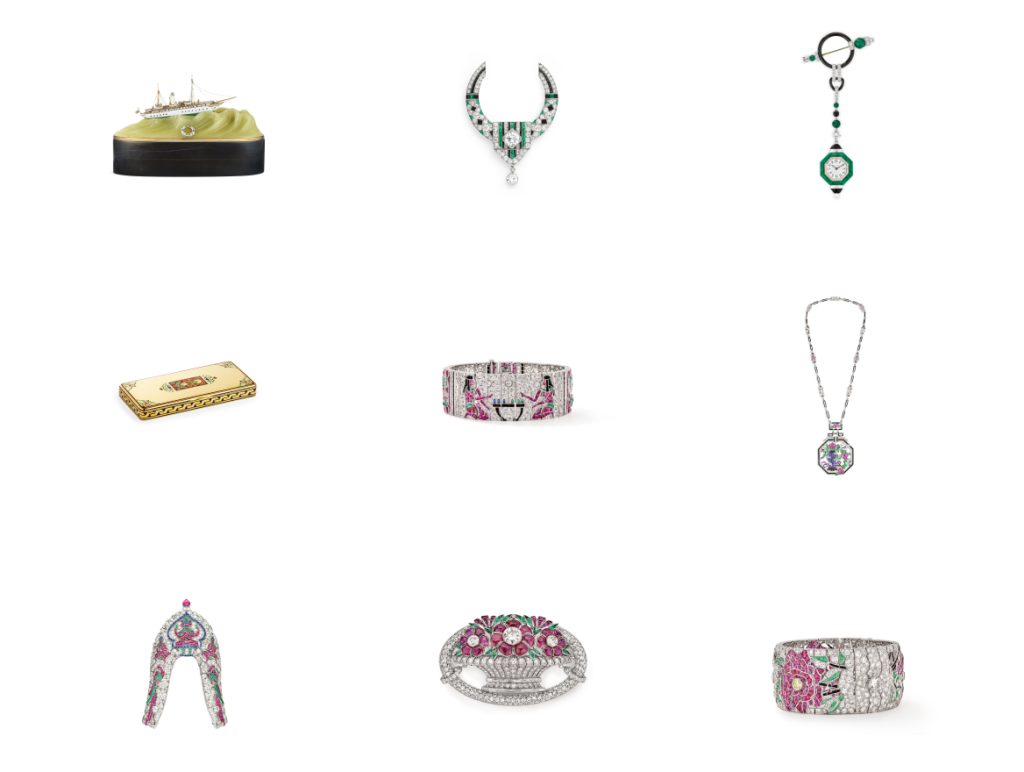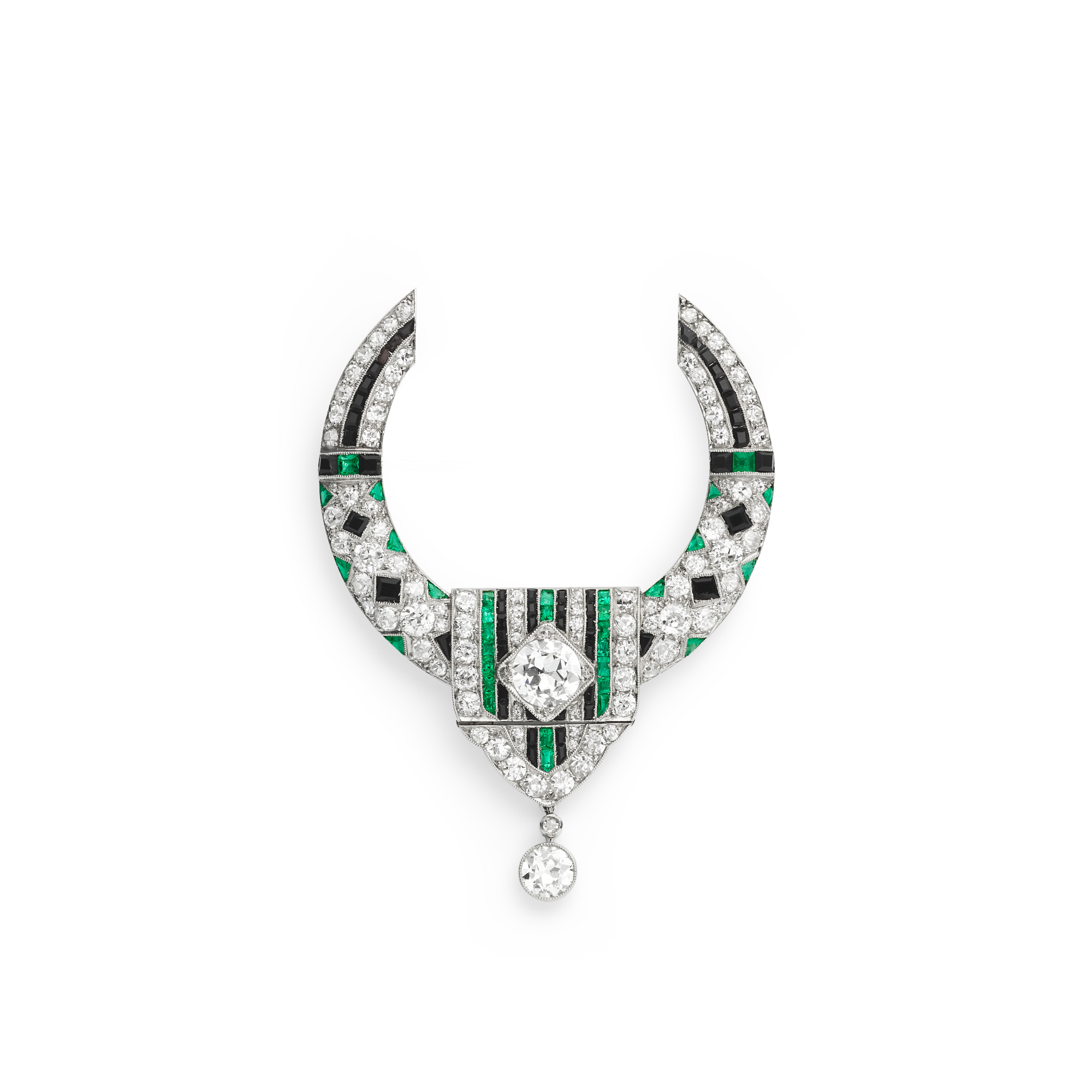
Lambrequin Anneau brooch
Creation details
- Creation year 1919
- Stone Diamond
- Stone Emerald
- Material Platinum
- Usage Clip
- Dimensions 41 × 55 mm
The Lambrequin Anneau brooch heralded the emergence of the Art Deco style in the jewelry arts in the immediate aftermath of the First World War, with its ornamental and chromatic characteristics. It is composed of a platinum circle the upper part of which is truncated.
Its lower part, of square-cut emeralds and onyx on a pave-set ground of brilliants, ends in a lambrequin motif, while a horizontal row of square-cut emeralds and onyx separates it from the upper part where a single line of calibrated onyx on pave-set diamonds echoes the curve of the clip. The pendant part of the lambrequin has alternating vertical lines of emeralds, onyx, and diamonds with a chased quadrangular diamond at their center. Another diamond is suspended from the tip of the lambrequin.
The Emerald-Onyx-Diamond collection
This brooch is distinguished by its geometric patterns, but also, and most particularly, by its color combination: “green, white and black, the most becoming of color harmonies.”1The so-called Masque de Fer, “Échos,” Le Figaro (December 13, 1919): 1. These three colors were used by Van Cleef & Arpels for a collection of different types of jewelry including clips and bracelets.2The so-called Masque de Fer, “Échos,” Le Figaro (December 9, 1919): 1.
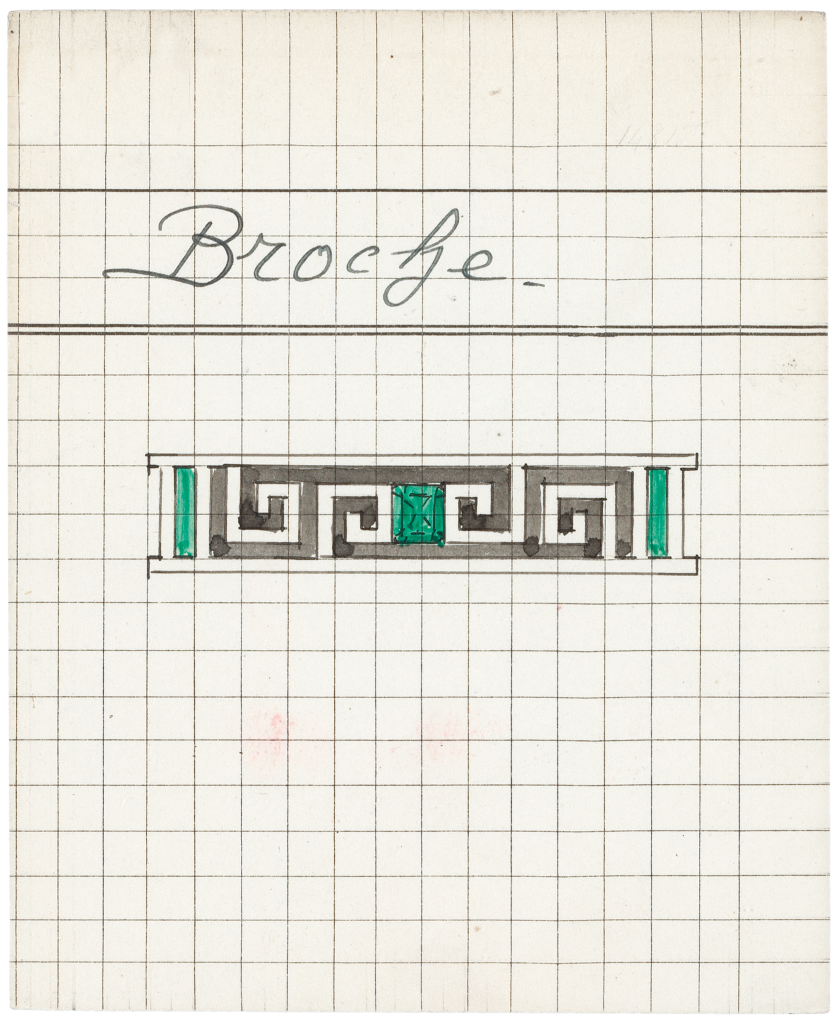
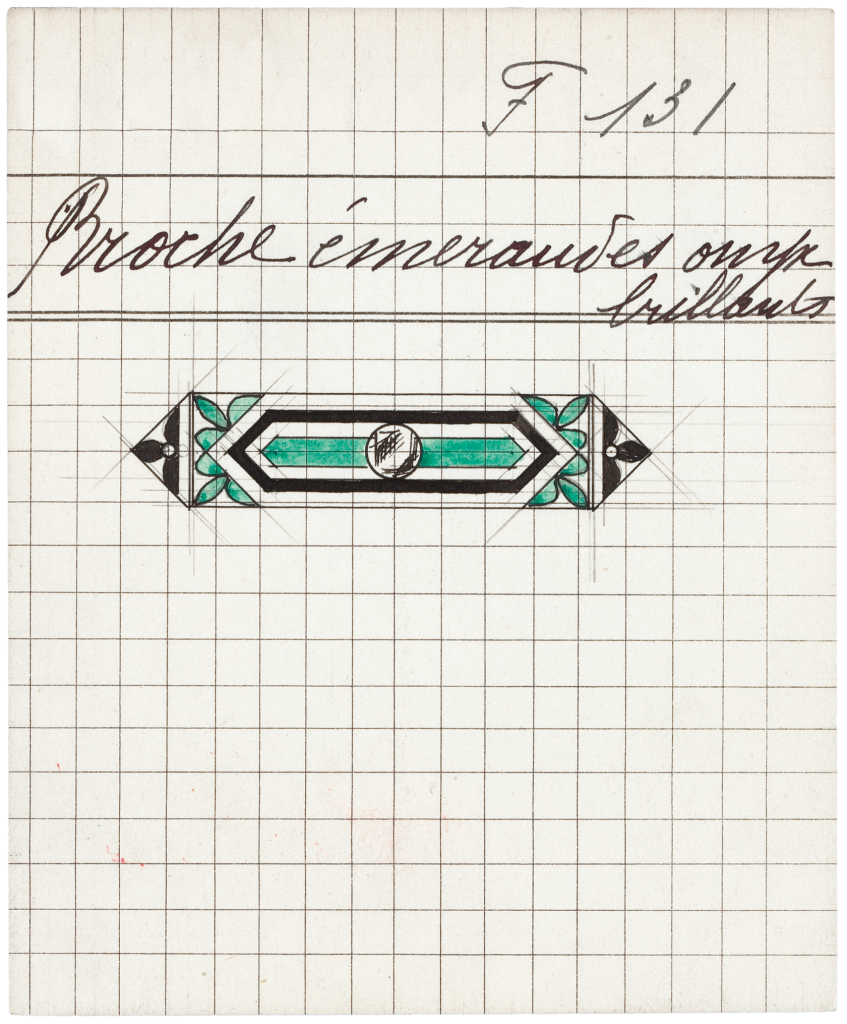
The beginnings of Art Deco
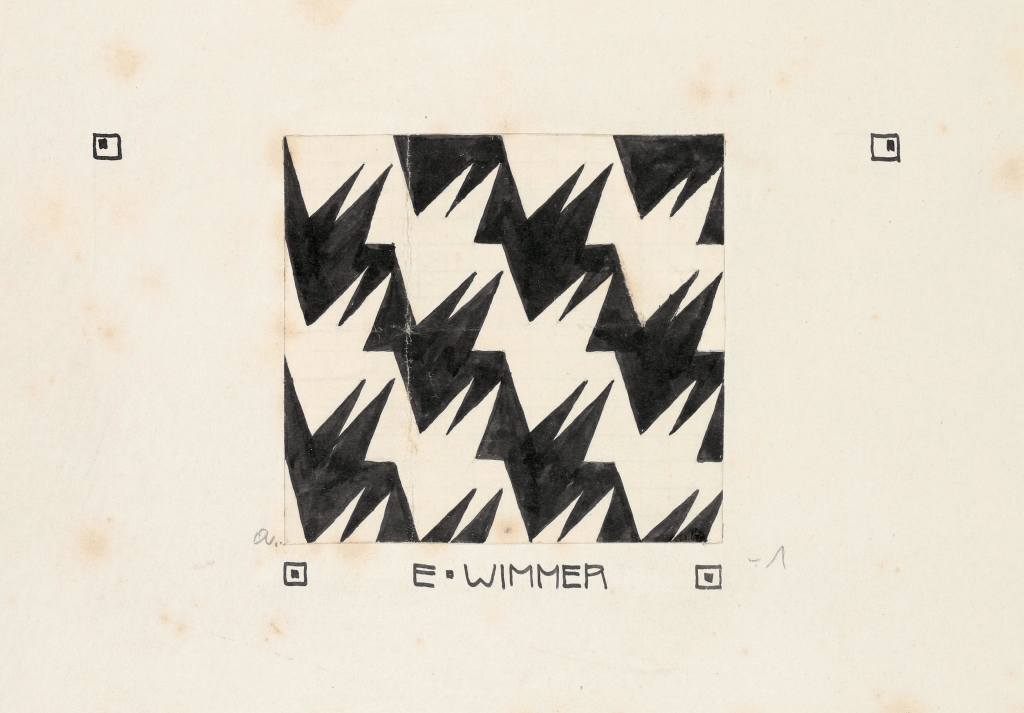
Geometry was pre-eminent in all the arts of the period, as seen in the work of the Wiener Werkstätte in Vienna, which championed straight lines and the use of pure colors. Introduced just before the First World War, this esthetic trend developed mainly between the wars and was honored at the Exposition internationale des arts décoratifs et industriels modernes in Paris in 1925.
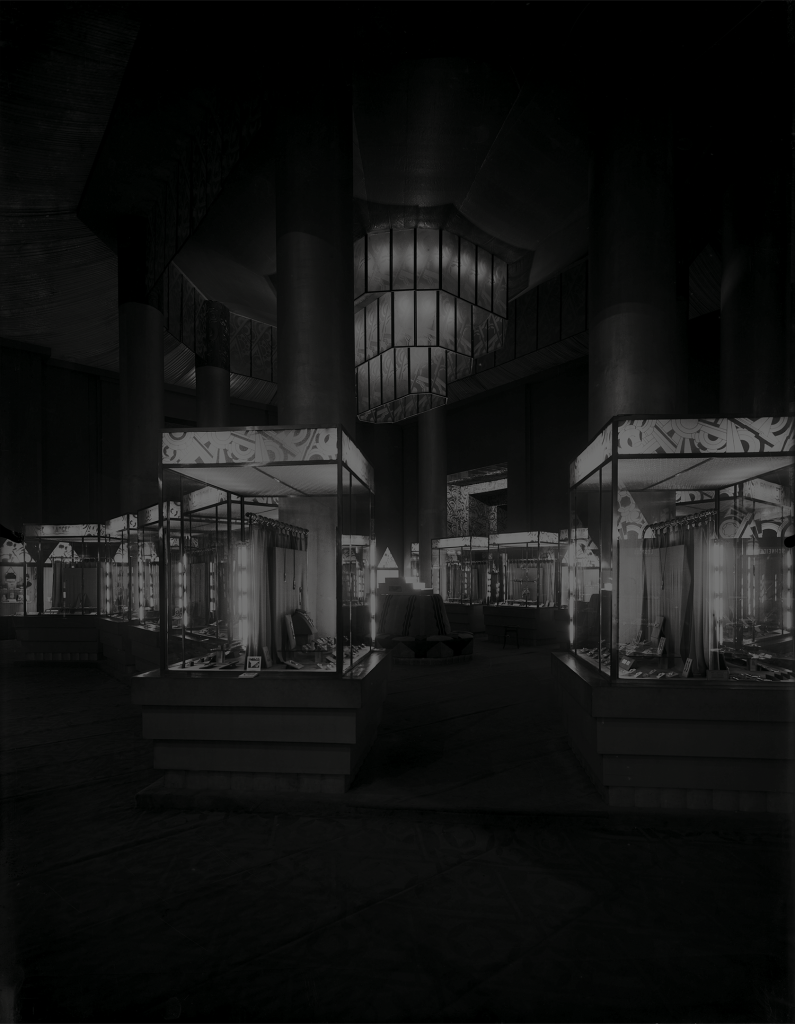
To go deeper
